Dr B R Ambedkar first visited LSE in 1916, returned in 1921 and submitted his doctoral thesis in 1923. LSE Archivist Sue Donnelly investigates Dr B R Ambedkar’s life at LSE.
In 1920 the economist Edwin R Seligman wrote from Columbia University to Professor Herbert Foxwell, teaching at LSE recommending a former student, Bhimrao Ramji (B R) Ambedkar, and asking Foxwell to help him in his research. In November 1920 Foxwell wrote to the School Secretary, Mrs Mair:
I find he has already taken his doctor’s degree & has only come here to finish a research. I had forgotten this. I am sorry we cannot identify him with the School but there are no more worlds here for him to conquer.
Despite this B R Ambedkar registered for a master’s degree and completed a PhD thesis on his second attempt to study at LSE. 2016 marks the 125th anniversary of B R Ambedkar’s birth in 1891 and the centenary of his first visit to LSE in 1916. Ambedkar was born into a family from a so-called “untouchable” caste. Ambedkar became a social reformer and architect of the Indian constitution.

After studying at Elphinstone High School in Bombay he was the first Dalit to enrol at Elphinstone College and the University of Bombay taking a degree in economics and political science. In 1913 he was awarded a Baroda State Scholarship and moved to Columbia University, New York, completing a masters in 1913 and a thesis, National Dividend of India-A Historic and Analytical Study in 1916. A desire to undertake research into the history of Indian finance and currency led Ambedkar to study in London where a wider range of research sources would be available.
In 1916 he registered at LSE for a master’s degree and took courses in Geography with Halford Mackinder, and Political Ideas with G Lowes Dickinson, alongside Social Evolution and Social Theory with Professor L T Hobhouse. The fees for the course were £10 10s. At the same time Ambedkar enrolled for the bar course at Gray’s Inn.

In 1916 LSE was only 21 years old but with a high reputation in the social sciences and for its international student body, in 1913-1914 142 students had come from outside of the Britain. The outbreak of the First World War had impacted on the work of the School and student numbers had fallen by almost half to around 800. Ambedkar’s studies were interrupted as he was recalled to India to serve as Military Secretary in Baroda and in July 1917 the University of London gave him leave of absence of up to four years.
In 1920 Ambedkar returned to LSE after working as professor of political economy at Sydenham College in Mumbai and giving evidence to the Scarborough Committee preparing the 1919 Government of India Act on the position and representation of “untouchable” communities. Initially he applied to complete his masters degree and write a thesis on The Provincial Decentralisation of Imperial Finance in India. His fees had gone up by a guinea to £11 11s. There was a slight glitch in his LSE career in April 1921 when he failed to send in his form for the summer examinations and the School Secretary, Mrs Mair, had to write to University of London’s Academic Registrar for permission to submit the form late.

In economics Ambedkar’s tutors included Professor Edwin Cannan and Professor Herbert Foxwell both of whom had taught at the School since its opening in 1895. He would also have met Theodore Gregory who began as an assistant in economics but became Cassell Reader in International Trade in 1920. Gregory became an economic advisor in India from 1938-1946.
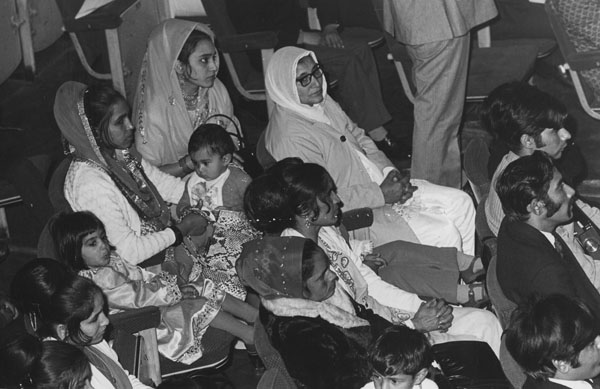
Ambedkar finally submitted his doctoral thesis, The Problem of the Rupee, in March 1923 but it was not recommended for acceptance. Reports claim that the thesis was too revolutionary and anti-British for the examiners. However there is no indication of this in Ambedkar’s student file. The thesis was resubmitted in August 1923 and accepted in November 1923. It was published almost immediately and in the preface Ambedkar noted “my deep sense of gratitude to my teacher, Professor Edwin Cannan “noting that Cannan’s “severe examination of my theoretical discussions has saved me from many an error”. Cannan repaid the complement by writing the Foreword to the thesis in which he found “a stimulating freshness” even if he disagreed with some of the arguments.
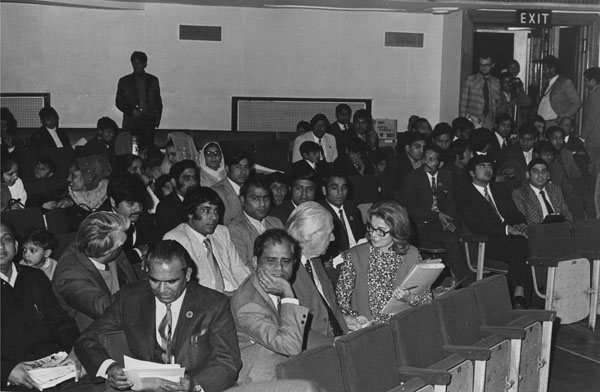
After his success Ambedkar returned to India where he was prominent in the campaign for Indian independence and opposing discrimination for Dalit communities. In 1947 he became the first Law Minister of independent India and was Chairman of the Constitution Drafting Committee. LSE continued to take an interest in his career and in 1932 the Director, William Beveridge, wrote to Professor Cannan that Ambedkar had been invited to the School by John Coatman, Professor of Imperial Economic Relations, formerly director of public information for the Indian Police Service and the British government in India, to meet Professor Gregory while attending the roundtable discussions on the Indian constitution.
In 1973 a portrait of B R Ambedkar was unveiled in the lobby to Clement House. A bust unveiled in 1994 is currently displayed in the Atrium Gallery of the Old Building.

To find out about LSE’s South Asia collections head to the LSE Library’s Traces of South Asia webpage.


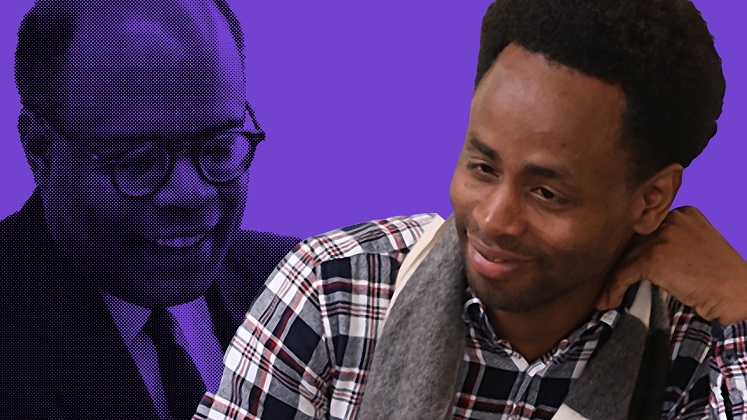
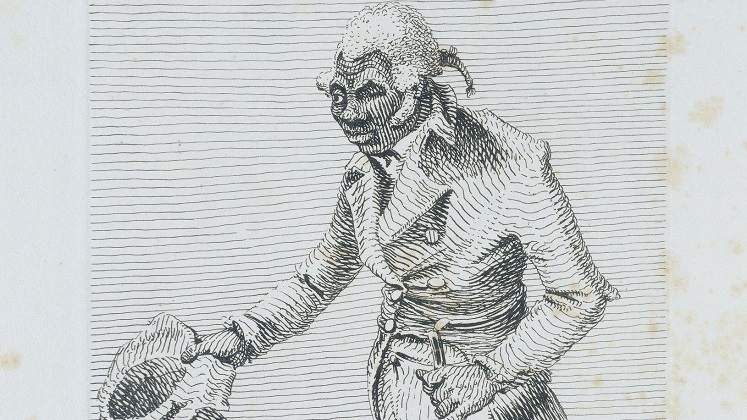
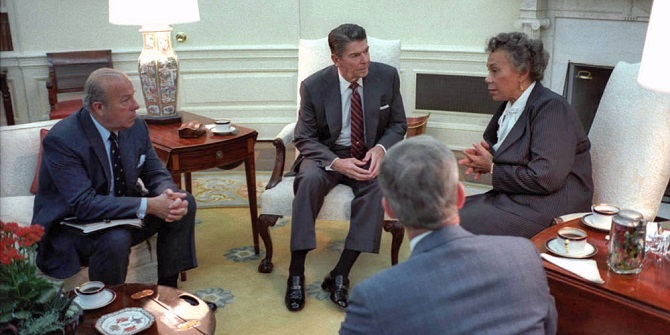
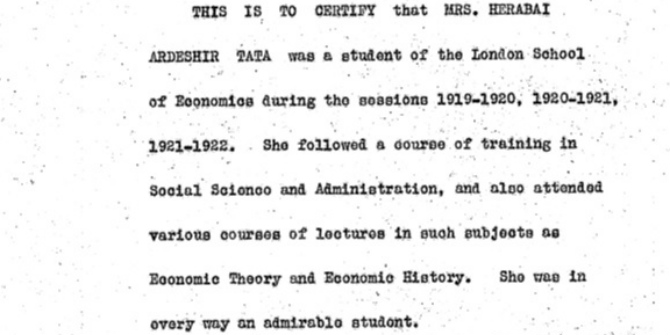
Marvelous, Kudos to Baba Saheb Dr. B. R. Ambedkar
He was great humen Being
Just amazing so talented and a great person belongs to the whole world that is Dr.BABASAHEB AMBEDKAR
Dr. Ambedkar was great revolutionary Student who oppose wrong policies of British Government in student life.
Ambedkar finally submitted his doctoral thesis, The Problem of the Rupee , in March 1923 but it was not recommended for acceptance. Reports claim that the thesis was too revolutionary and anti-British for the examiners.
You wrote – Ambedkar was later to popularise the use of the term Dalit meaning ‘oppressed’
Dr. Ambedkar didn’t popularise the term Dalit. He hardly used term Dalit instead he preferred Scheduled castes or Untouchable. Dalit term became famous in early 70s with the rise of Dalit Panthers movement in India.
The title of this piece speak the lot… ‘No More Worlds Here for Him to Conquer’ – Dr BR Ambedkar at LSE.
Unfortunately, the “Savarnas Academia” tried their level best to boycott the scholarship of “BabaShaheb Ambedkar”, but “the power” of his scholarship now turning the table
Great man!!!!!!!!!!!! Jai Bhim
A phenomenally inspiring individual who achieved so much for so many.
“Not only very able but exceedingly pleasant fellow” to a foreigner beyond all kinds oppression he underwent in his home country. A genious and revolutionary thinker much ahead of his time. History will remember him for long.
Dr. babasaheb Ambedkar was Ultimate man for India. I Read “The problem of Rupees”. sir im saluting you. i got many good knowledge from this book.
Sagar Jagtap
B.Sc., MBA- Finance
Thank you for the information but it was not Dr. Ambedkar who popularise the term Dalit. Dalit term became the household name after Dalit Panthers in 1970s.
Baba saheb ambedkar is the most intellectual person and he design the society of human how to live on earth with equality fraternity and freedom. And he give the new ideas to society of the world, to creat something new for benefits of the human and for their betterment.
Dr. B. R. Ambedkar was and is the voice of voice less. I adore him for his interpretation of Freedom and justice. He can be compared to himself and none.
Respected sir/Madam,
I like to know whether anybody conducted research on “Library use study of Dr B R Ambedkar” at university library. Can I will know library records, entry records of Students, their usage, timing most brobaly about Dr B R Ambedkar
Dr BR AMBEDKAR was a person who had proved that one untouchable can write thesis of PhD from prestigious university LSE at the time when India was under British ruling.Even some people who believe in casteisms are not appreciate his work..
Dr BR AMBEDKAR was a person who had proved that one untouchable can write thesis of PhD from prestigious university LSE …
A great son of India. I think he should have become the 1st Prime Minister of India.
Thanks to LSE for remembering and keeping the memory of Dr. B R Ambedkar afresh for young generations. It is indeed a great tribute to the scholar of par excellence in several fields of humanities. The appreciation of Professor Edwin R Seligman and Professor and Professor Edwin Cannan about Dr B R Ambedkar proves his intellectual ability and his academic ideas impart “a stimulating freshness”. The world remembers his instinct fight for human entitlements, human rights, human freedom and equality of opportunities to downtrodden. His struggles and hard works are inspirational to students. Many generations are benefited from his teachings and works which helped transforming India as “the world’s largest democracy”. Dr B R Ambedkar always lives in the hearts of Indians and inspires billions of Indians and the world community at large for centuries.
Professor Krishna Raj, Institute for Social and Economic Change (ISEC), Bengaluru
Br ambedkar was the greatest in the world because he changed the history of india by providing equal rights to dalit(untouchables) in india and constitution of india made by br ambedkar
I grateful to LSE for sharing such a awesome and wonderful document of the man behind the creator of Indian constitution and his contribution to Indian economy. His contribution from making constitution to establishing Indian rupee, balancing the social equality is unforgettable.
he is great man .i salute him from my bottom of my heart.
jai bhim ! namo buddha.
I reached a great message after a long time. It’s my good luck may be bad luck.
Doctor AMBEDKAR is the father of modern india. He turned it’s direction in to a new path towards liberty, equality, and fraternity.
India can became developed country by his thoughts
Dr B R Ambedkar was great philosopher of India and the father of Indian constitution all Indian people proud feeling and respectful towards D R ambedkar
First of all Jai Bhim and thank you for providing this.
He is not the constitution maker of India ,but also a greatest economist , world’s greatest lawyer and social reformer.
I salute you sir .
Great man Architecture of Indian Constitution and unveil Buddhisum of India again for untouchables which gives teaching of Equality, love and compassion.
He was also a mahanatma…….jai hind jai bharat🙏
As one coming from poor besides untouchable family also as its first learner from a village, I can imagine the burden of social oppression and indignity any one in his position had to undergo. Away from his native land, he, fortunately, spent rest of his educational career after graduation from Sydenham College, Bombay in the world of light, where he was marked for his merit not by his caste. He continues to be measured and viewed first as a dalit by his countrymen at home as well as abroad.
In 2004, Prof. Valentine Danial, Prof. Anthropology in Columbia University wanted to create a Chair in honour of Dr. Ambedkar, one of its outstanding alumni. But the upper caste members in the Faculty, Prof. Danial was quoted by The New York Times, October 24, 2004, resisted the proposal. In 2011 ultimately the Chair was set up after, of course, creating first two Scholarships in the name of a professor, favourite of the ruling dispensation in India.
Everyday the stature of Dr. Ambedkar is growing taller across the globe for his selfless service to humanity, the cause he pursued all his life and relentless fight for dignity of the voiceless and oppressed in a unequal society.
I salute to him.
London school of economics has given gems to humanity. Surely DR. B.R.AMBEDKAR was one of them. He has done so much good in so little time. Changing the foundational structure within a hindu religion it may seem like easy but it’s close to impossible thing to achieve but with his intellect dr. B.R. Ambedkar has done that.
“The man who defeated the religion is the DR. B.R.Ambedkar”
Dr Ambedkar is the Symbol of Equality and social justice. “We are because he was.”